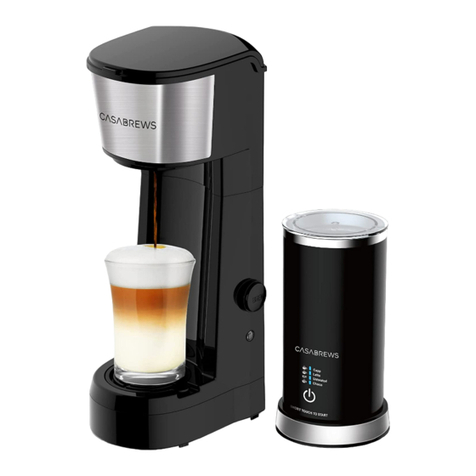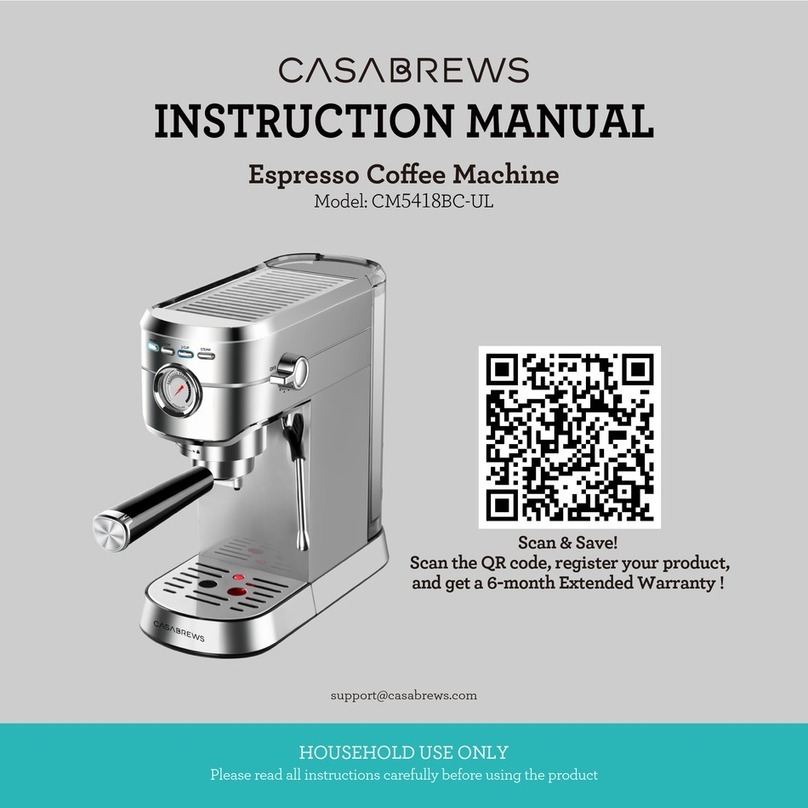CASABREWS CM1699 User manual
Other CASABREWS Coffee Maker manuals

CASABREWS
CASABREWS 5700 PRO User manual

CASABREWS
CASABREWS CM5418BC-UL User manual

CASABREWS
CASABREWS CM5418BC-UL User manual

CASABREWS
CASABREWS 3700 ESSENTIAL User manual

CASABREWS
CASABREWS KCM010A User manual

CASABREWS
CASABREWS 5700 Gense User manual

CASABREWS
CASABREWS CM5418BC-UL User manual

CASABREWS
CASABREWS 5700 Gense User manual

CASABREWS
CASABREWS CM5418BC-UL User manual
Popular Coffee Maker manuals by other brands

Bunn
Bunn LCA-1 Installation & operating guide

Chris Coffee Service
Chris Coffee Service Silvano owner's manual

Black & Decker
Black & Decker BLACK DECKER HOME DE790 Use and care book

Saeco
Saeco Vienna Plus Sup 018M operating instructions

INCAPTO
INCAPTO BXCO1470E Instructions for use

Bosch
Bosch TASSIMO finesse TAS16B Series user manual





















